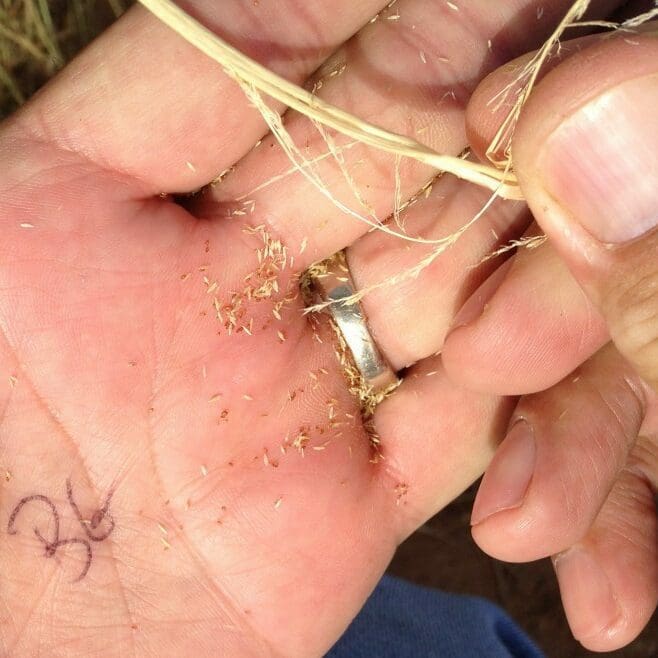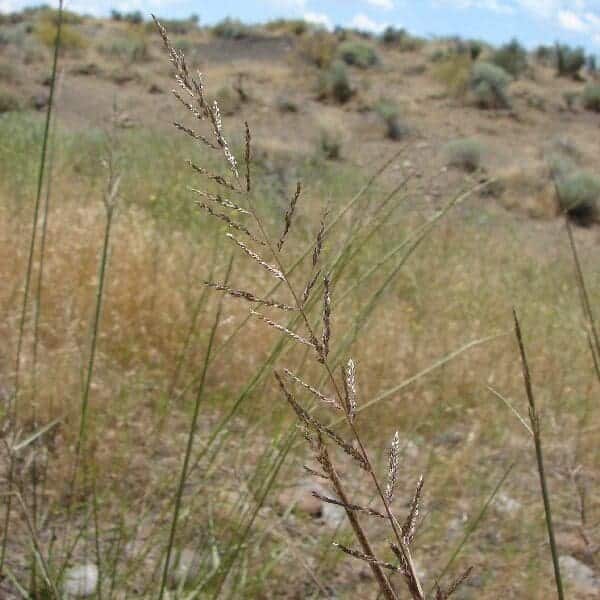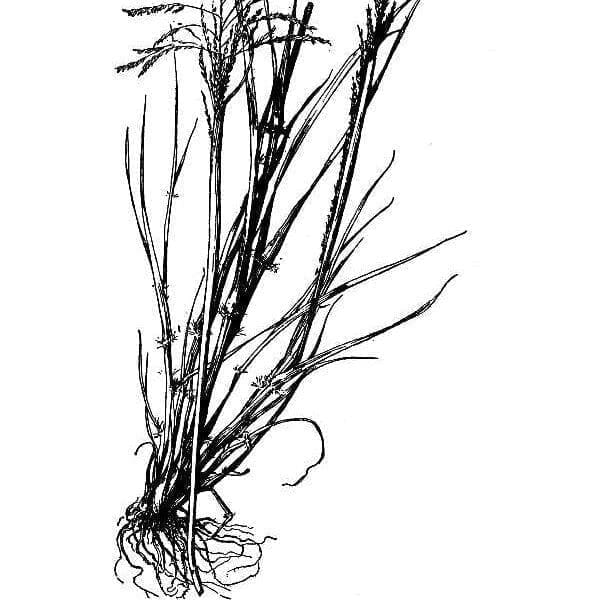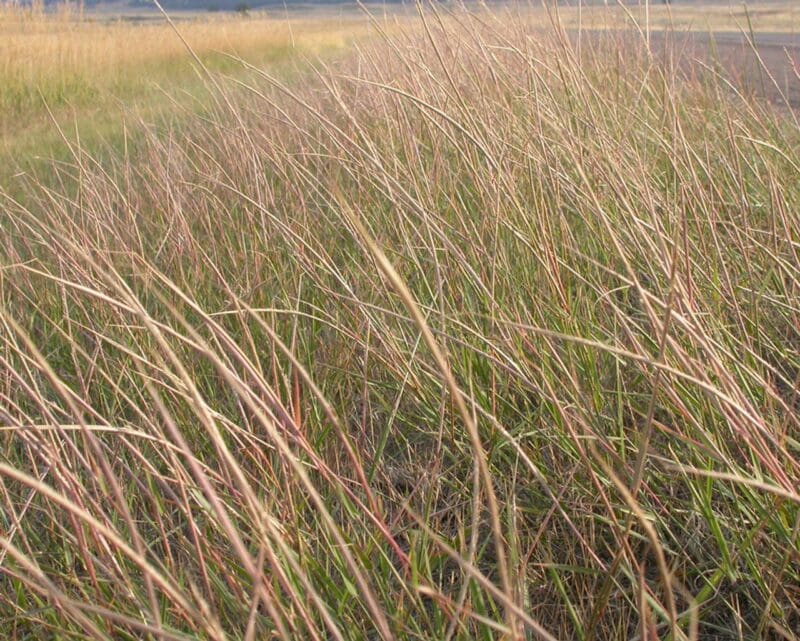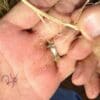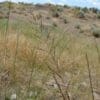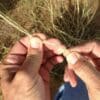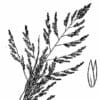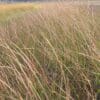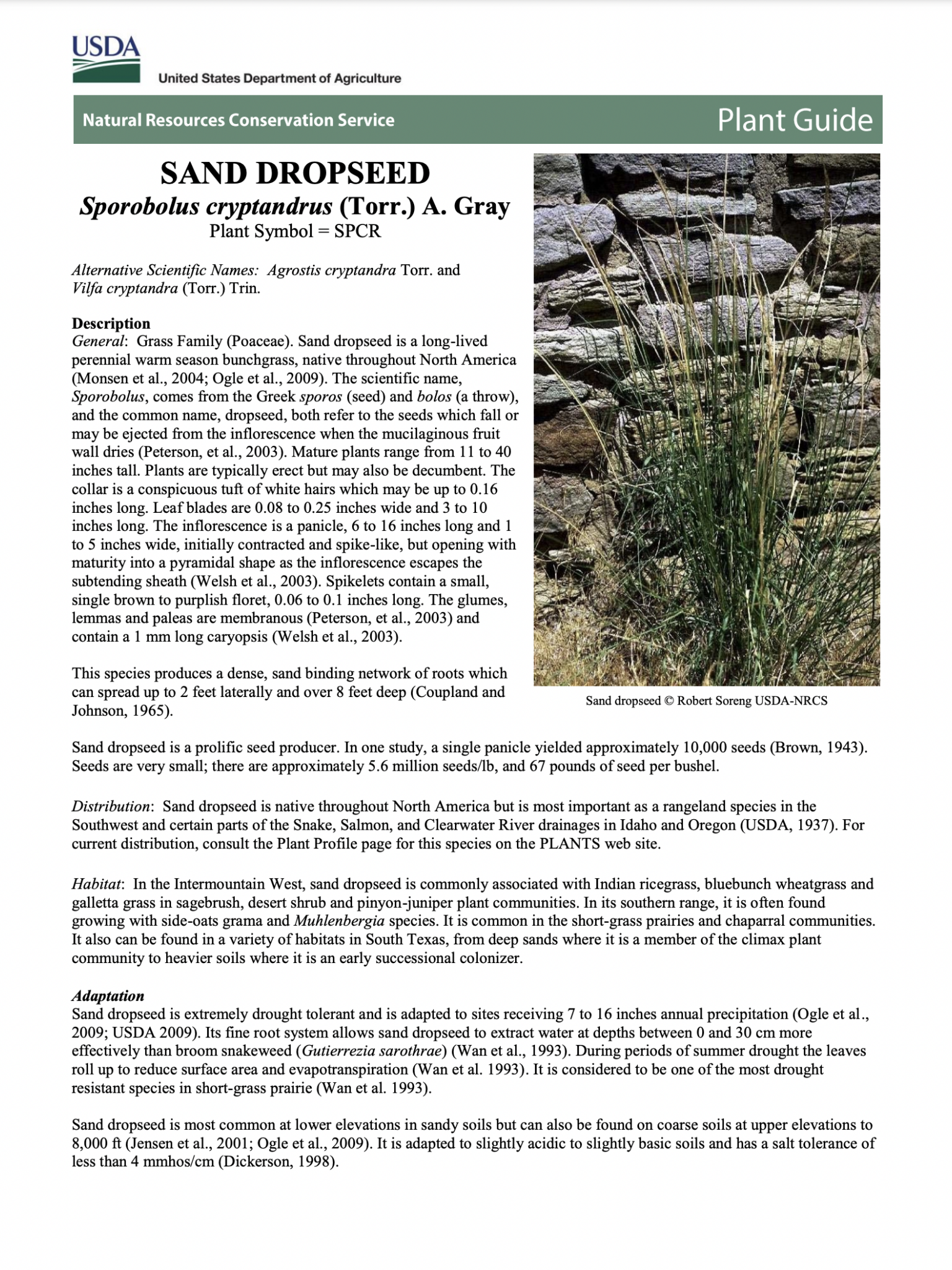Sand Dropseed
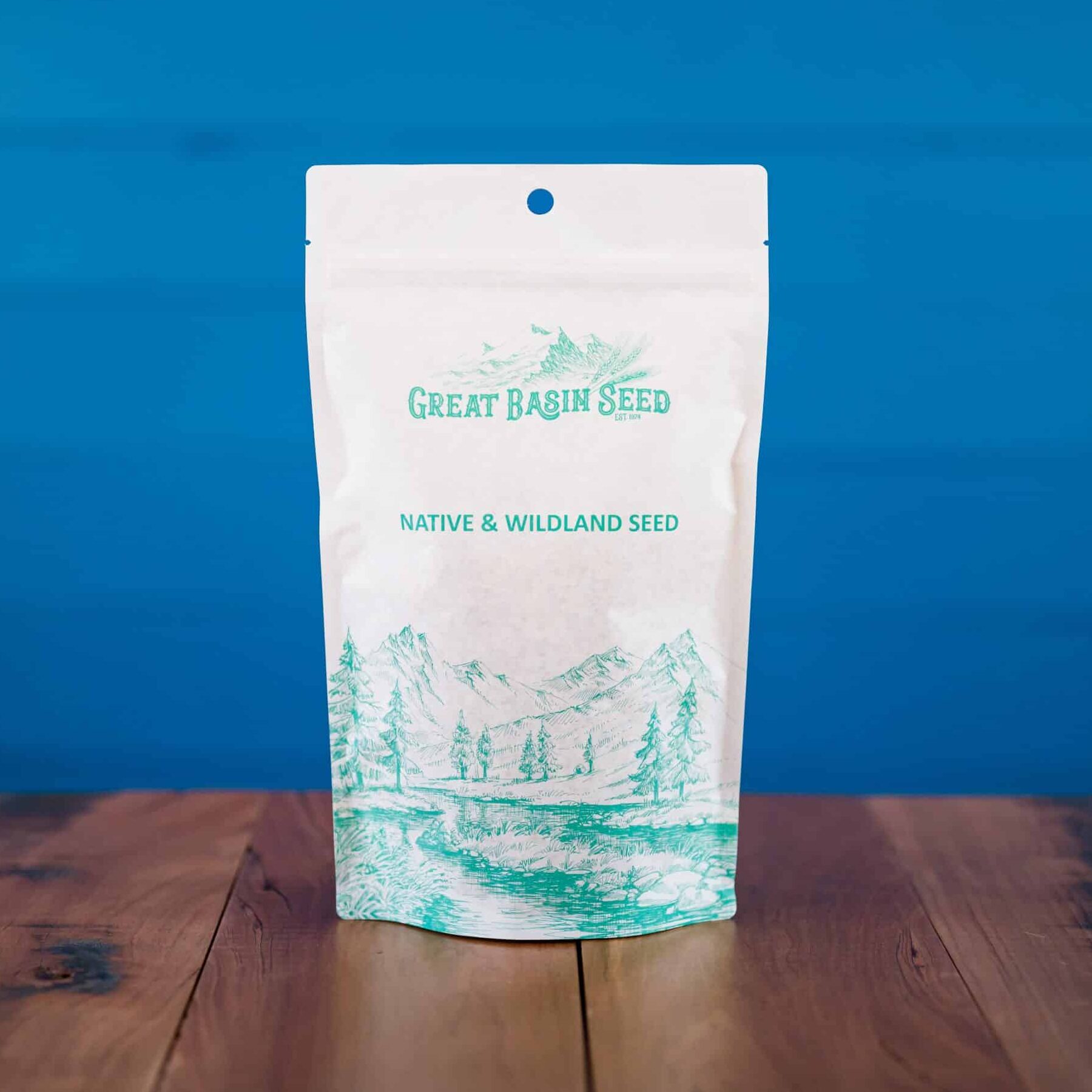 $12.80 – $22.00
$12.80 – $22.00 - Scientific name: Sporobolus cryptandrus
- Long-lived, native perennial
- Warm season bunchgrass
- Produces a dense, binding network of roots
- Can spread up to 2 feet laterally and 8′ deep
- Prolific seed producer
- Extremely drought tolerant
- Adapted to 7 to 16 inches annual precipitation
Sand dropseed (Sporobolus cryptandrus) is a long-lived perennial warm season bunchgrass, native throughout North America. This species produces a dense, sand binding network of roots which can spread up to 2 feet laterally and over 8 feet deep. Sand dropseed is a prolific seed producer. In one study, a single panicle yielded approximately 10,000 seeds (Brown, 1943). Seeds are very small; there are approximately 5.6 million seeds/lb.
Sand dropseed (Sporobolus cryptandrus) is widely used in disturbed area plantings in the Southwest, Intermountain West and short-grass prairies of the Great Plains. The fibrous root system effectively stabilizes sand dunes and hills. Its abundant seed production makes it a pioneer plant in disturbed areas and an invader of sandy soils.
Sand dropseed is native throughout North America but is most important as a rangeland species in the Southwest and certain parts of the Snake, Salmon, and Clearwater River drainages in Idaho and Oregon.
In the Intermountain West it sand dropseed is commonly associated with Indian ricegrass, bluebunch wheatgrass and Galletta grass in sagebrush, desert shrub and pinyon- juniper plant communities. In its southern range it is often found growing with side-oats grama and muhly species. In other regions it is common in the short-grass prairies and chaparral communities.
Sand Dropseed Adaptation
Sand dropseed is extremely drought tolerant and is adapted to sites receiving 7 to 16 inches annual precipitation (Ogle et al., 2009; USDA 2009). Its fine root system allows sand dropseed to extract water at depths. During periods of summer drought the leaves roll up to reduce surface area and evapotranspiration. It is considered to be one of the most drought resistant species in short-grass prairie.
Sand dropseed is most common at lower elevations in sandy soils but can also be found on coarse soils at upper elevations to 8,000 ft (Jensen et al., 2001; Ogle et al., 2009). It is adapted to slightly acidic to slightly basic soils and has a salt tolerance of less than 4 mmhos/cm (Dickerson, 1998).
Establishment
This species spreads naturally from seed once established and increases on depleted rangelands and wastelands. Sand dropseed plants are able to withstand heavy use due to their protected root crown, late maturity and because they are less preferred than other species.
The scientific name, Sporobolus, comes from the Greek sporos (seed) and bolos (a throw), and the common name, dropseed, both refer to the seeds which fall or may be ejected from the inflorescence when the mucilaginous fruit wall dries (Peterson, et al., 2003).
***Click on the “Quick Plant Facts” tab above for more information.
Sand Dropseed NRCS Plant Guide
Sand Dropseed NRCS Plant Guide
PDF version of NRCS Plant Guide & Fact Sheet
Citation: Tilley, D., L. St. John, and D. Ogle. 2009. USDA-Natural Resources Conservation Service, Idaho Plant Materials Center. Aberdeen, ID.
Helpful Links
Additional information about this product can be found on the academic websites linked below.
Synonyms
Many plants have more than one common and scientific name. We've listed a few of them below.
- Sand Dropseed
- Sporobolus cryptandrus
Who is Great Basin Seed?
Great Basin Seed is a seed company that specializes in seed sales and consultation for home, ranch, farm, range and reclamation. We have been a leader in the seed industry since 1974.
Our History
We've been in the seed business since 1974.
What We Offer
We offer seed for home, farm, ranch, range and reclamation projects.
Meet the Gang
We have the best employees in the world! We are proud of the work they do, and trust them to serve you!
Right: Company founder Lloyd and his wife Paula Stevens in a wildflower seed production field circa 1977
Quick Plant Facts
| Common Name: | Sand Dropseed |
|---|---|
| Scientific Name: | |
| Plant Type: | |
| Origin: | |
| Lifespan: | |
| Seed Count | 5,298,000 seeds/lb. |
| Min. Precipitation | 8 Inches Minimum |
| Zone Map | comingsoon.gif |
| Root Form | Bunchgrass |
| Growth Height: | |
| Best SowingTime | Late Summer |
| Sowing Rate | 1-2 PLS lbs. per Acre |
| Max Sowing Depth: | |
| Growth Season: | |
| Sun & Shade Tolerance: | Full Sun, Shade Intolerant |
| Elevation of Occurance: | |
| pH Tolerance: | |
| Hardiness Zones: | |
| Select a Package Size and Quantity | 8 oz. Pouch (0.50 lbs.), 1 lb. (by the pound) |
